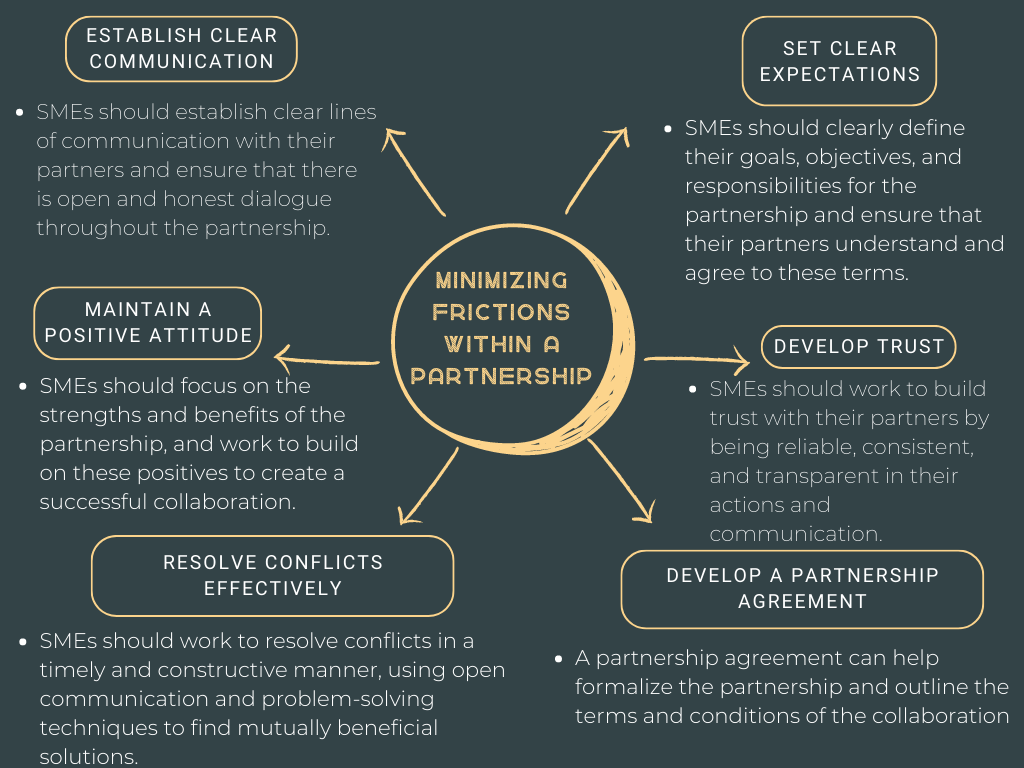|
|
Module 5: Building win-win scenarios for open innovation projects |
|
|
Marina Dabić, Tena Obradović Posinković |
|
|
The focus of this module is to assist participants in cultivating "business empathy," which involves comprehending the objectives of partners and creating project objectives that consider priorities and allocate risks. In addition, it will offer guidance to participants on how to minimize tensions within the partnership. Moreover, the module will foster participants' comprehension of how to uphold key principles of collaboration, such as the equitable distribution of benefits, contributions, risks, and ownership. |
|
Upon completing this module, you should be able to: |
|
Minimizing frictions within a partnership
Open innovation collaboration is a strategic approach to innovation that involves partnering with external organizations, such as research institutions, startups, or other companies, to bring new products, services, or processes to the market. In the agro-food or bioeconomy sectors, this can involve collaborations on topics such as sustainable agriculture, food safety, or new bio-based products. SMEs in these sectors can benefit greatly from open innovation collaborations as it allows them to leverage the expertise and resources of external partners to develop new products or improve existing ones. Collaborations can also help SMEs access new markets, reduce development costs, and speed up time to market. Overall, by prioritizing clear communication, setting clear expectations, developing trust, resolving conflicts effectively, maintaining a positive attitude, and formalizing the partnership with an agreement, SMEs can minimize frictions within their partnerships and work towards a successful collaboration.
In order for small and medium-sized enterprises (SMEs) to ensure the success of their collaborative efforts, it is important to minimize any frictions within the partnership. There are several ways that SMEs can achieve this. Firstly, it is crucial to establish clear communication between partners, with open and honest dialogue throughout the partnership. Secondly, setting clear expectations from the outset can prevent misunderstandings and disagreements down the line. Thirdly, trust is essential for any successful partnership, and SMEs can work to build trust with their partners by being reliable, consistent, and transparent in their actions and communication. Fourthly, conflicts are inevitable, but resolving them constructively and in a timely manner can make all the difference. Fifthly, maintaining a positive attitude can help SMEs navigate challenges and maintain a productive partnership by focusing on the strengths and benefits of the partnership. Lastly, developing a partnership agreement can formalize the collaboration, minimize potential frictions, and ensure that both parties have a clear understanding of their roles and responsibilities. Overall, open innovation collaboration can be a powerful tool for SMEs in the agro-food or bioeconomy sectors, allowing them to tap into external expertise and resources to drive innovation and growth.
Take a 3-5 minutes and think:
5. How can agro-food and bioeconomy SMEs tailor their strategies for minimizing frictions within partnerships to account for the unique challenges and complexities of their industries?
6. What role does effective communication play in minimizing frictions within partnerships for agro-food and bioeconomy SMEs, and how can SMEs ensure that communication is open and transparent throughout the partnership?
